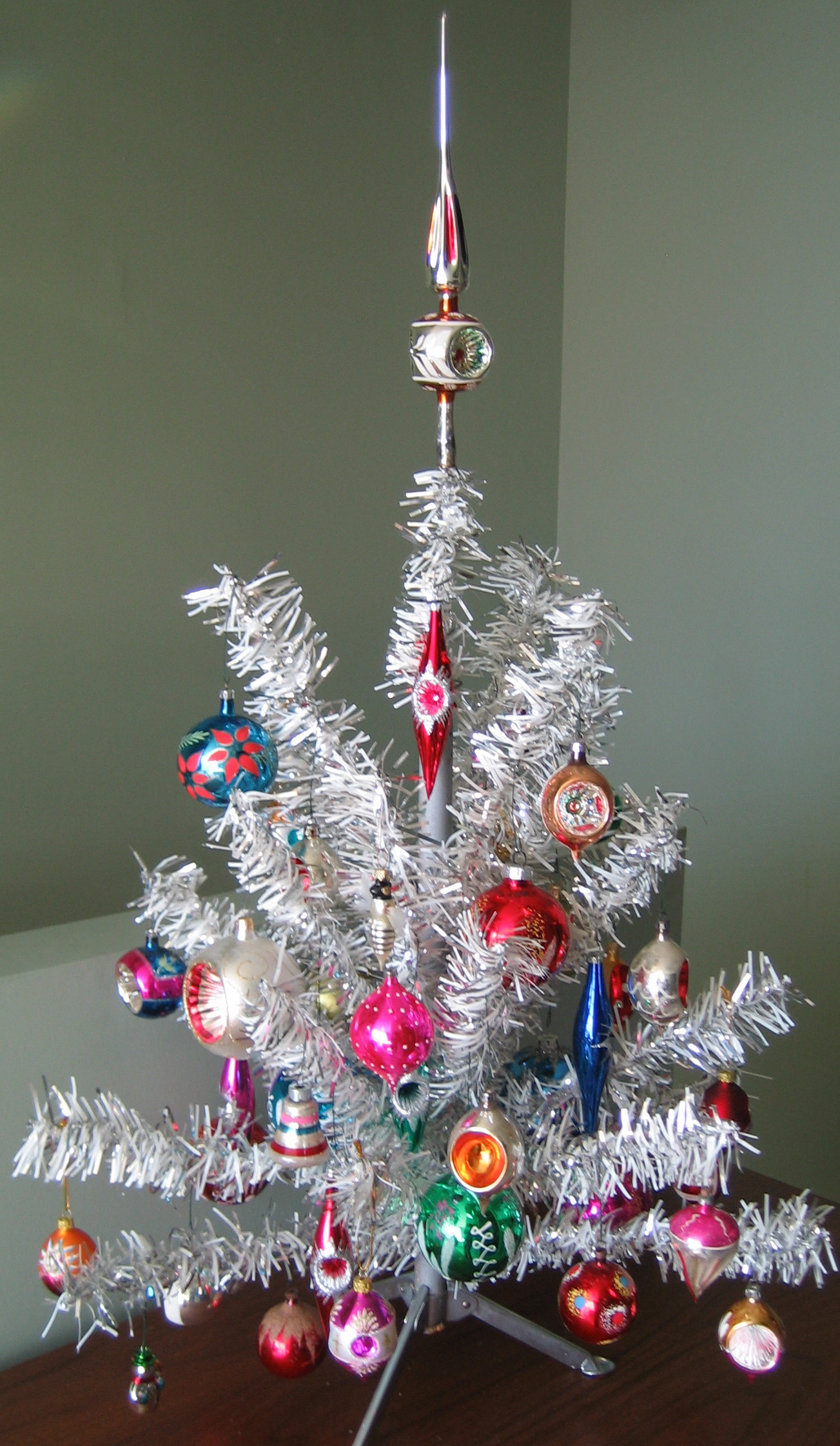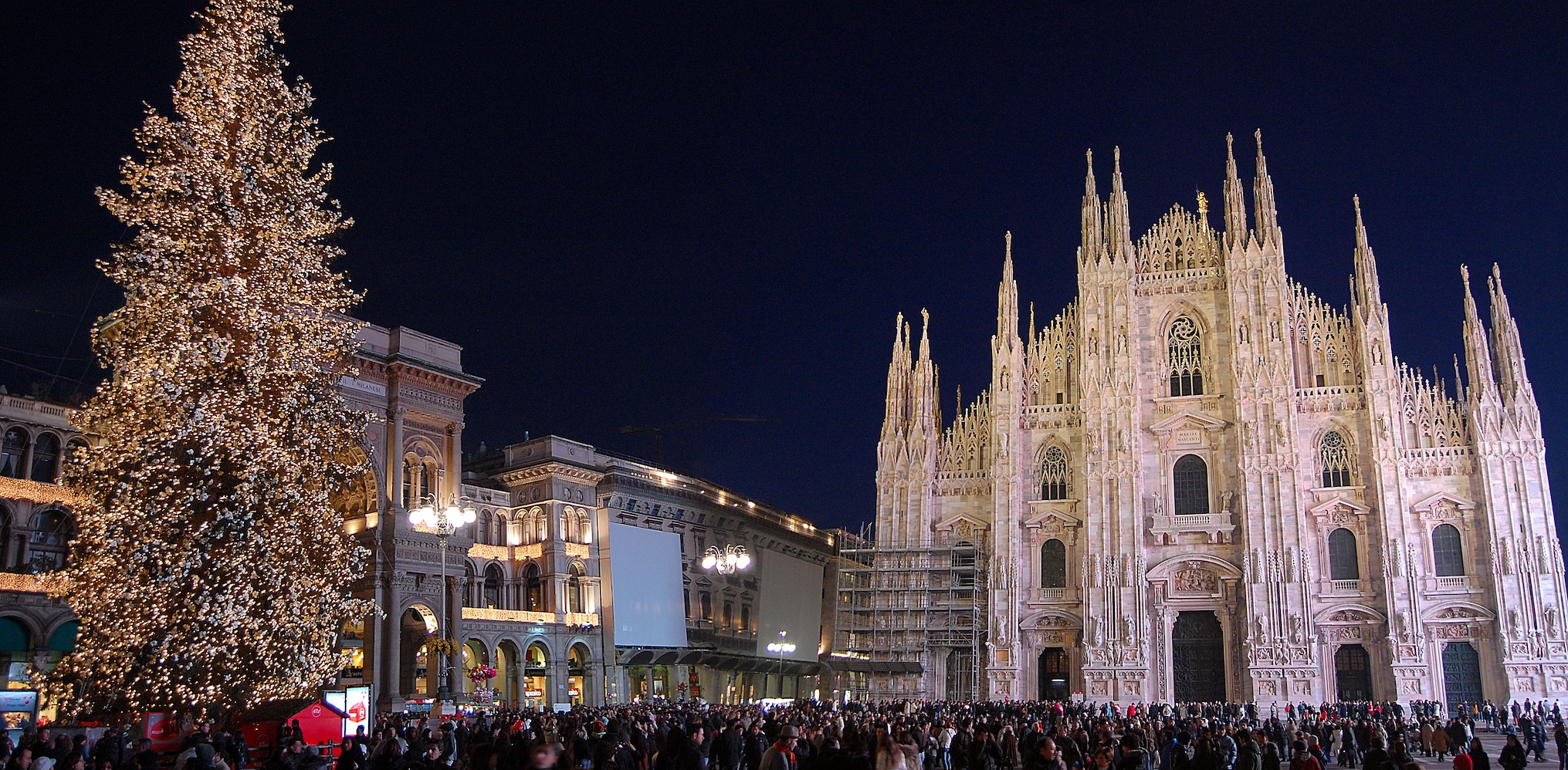|
Tinsel
Tinsel is a type of decorative material that mimics the effect of ice, consisting of thin strips of sparkling material attached to a thread. When in long narrow strips not attached to thread, it is called "lametta", and emulates icicles. It was originally a metallic garland for Christmas decoration. The modern production of tinsel typically involves plastic, and is used particularly to decorate Christmas trees. It may be hung from ceilings or wrapped around statues, lampposts, and so on. Modern tinsel was invented in Nuremberg, Germany, in 1610, and was originally made of shredded silver. According to the '' Concise Oxford Dictionary'', the word is from the Old French word ''estincele'', meaning "wiktionary:sparkle">sparkle". History In the 16th-century the word "tinsel" was used for a variety of lightweight fabrics with a metallic effect made with silk and gold and silver thread, including "tinselled satin". These tinsel fabrics were used in elite clothes (regulated by sumpt ... [...More Info...] [...Related Items...] OR: [Wikipedia] [Google] [Baidu] |
Garland (decoration)
A garland is a decorative braid, knot or wreath of flowers, leaves, or other material. Garlands can be worn on the head or around the neck, hung on an inanimate object, or laid in a place of cultural or religious importance. In contemporary times, Garlands are used to decorate, especially around holidays Etymology From the French , itself from the Italian , a braid. Types *Bead garland *Flower garland ** Lei – The traditional garland of Hawaiʻi. **Daisy chain – A garland created from the daisy flower (generally as a children's game) is called a daisy chain. One method of creating a daisy chain is to pick daisies and create a hole towards the base of the stem (such as with fingernails or by tying a knot). The stem of the next flower can be threaded through until stopped by the head of the flower. By repeating this with many daisies, it is possible to build up long chains and to form them into simple bracelets and necklaces. Another popular method involves pressing the f ... [...More Info...] [...Related Items...] OR: [Wikipedia] [Google] [Baidu] |
Aluminum Christmas Tree
An aluminum Christmas tree is a type of artificial Christmas tree that was popular in the United States from 1958 until about the mid-1960s. As its name suggests, the tree is made of aluminium, aluminum, featuring foil needles and illumination from below via a rotating color wheel (optics), color wheel. The aluminum Christmas tree was used as a symbol of the commercialization of Christmas in the 1965 television special, ''A Charlie Brown Christmas'', which discredited its suitability as a holiday decoration. By the mid-2000s aluminum trees found a secondary market online, often selling for high premiums. The trees have also appeared in museum collections. History Manufacturing Aluminum trees have been said to be the first artificial Christmas trees that were not green in color.Hewitt, James. ''The Christmas Tree'', Google Books, Lulu.com, 2007, p. 34, (). It is more accurate to say that aluminum Christmas trees were the first nongreen Christmas trees commercially successful on a ... [...More Info...] [...Related Items...] OR: [Wikipedia] [Google] [Baidu] |
Christmas Tree
A Christmas tree is a decorated tree, usually an evergreen pinophyta, conifer, such as a spruce, pine or fir, associated with the celebration of Christmas. It may also consist of an artificial tree of similar appearance. The custom was developed in Central Europe, particularly Germany and Livonia (now Estonia and Latvia), where Protestantism, Protestant Christians brought decorated trees into their homes. The tree was traditionally decorated with "roses made of colored paper, tinsel, apples, wafers, and sweetmeats, confectionery". Moravian Church, Moravian Christians began to illuminate Christmas trees with candles, which were often replaced by Christmas lights after the advent of electrification. Today, there is a wide variety of Christmas ornament, traditional and modern ornaments, such as garlands, Christmas ornament, baubles, tinsel, and candy canes. An angel or star might be tree-topper, placed at the top of the tree to represent the Angel Gabriel or the Star of Bethlehe ... [...More Info...] [...Related Items...] OR: [Wikipedia] [Google] [Baidu] |
Christmas Trees
A Christmas tree is a decorated tree, usually an evergreen conifer, such as a spruce, pine or fir, associated with the celebration of Christmas. It may also consist of an artificial tree of similar appearance. The custom was developed in Central Europe, particularly Germany and Livonia (now Estonia and Latvia), where Protestant Christians brought decorated trees into their homes. The tree was traditionally decorated with "roses made of colored paper, tinsel, apples, wafers, and confectionery". Moravian Christians began to illuminate Christmas trees with candles, which were often replaced by Christmas lights after the advent of electrification. Today, there is a wide variety of traditional and modern ornaments, such as garlands, baubles, tinsel, and candy canes. An angel or star might be placed at the top of the tree to represent the Angel Gabriel or the Star of Bethlehem, respectively, from the Nativity. Edible items such as gingerbread, chocolate, and other sweets are ... [...More Info...] [...Related Items...] OR: [Wikipedia] [Google] [Baidu] |
Tarnish
Tarnish is a thin layer of corrosion that forms over copper, brass, aluminum, magnesium, neodymium and other similar metals as their outermost layer undergoes a chemical reaction. Tarnish does not always result from the sole effects of oxygen in the air. For example, silver needs hydrogen sulfide to tarnish, although it may tarnish with oxygen over time. It often appears as a dull, gray or black film or coating over metal. Tarnish is a surface phenomenon that is self-limiting, unlike rust. Only the top few layers of the metal react. The layer of tarnish seals and protects the underlying layers from reacting. Tarnish preserves the underlying metal in outdoor use, and in this form is called chemical patina, an example of which is the green or blue-green form of copper(II) carbonate known as verdigris. Unlike patina advantageous in applications such as copper roofing and copper, bronze, and brass statues and fittings exposed to the elements, a chemical patina may be considered u ... [...More Info...] [...Related Items...] OR: [Wikipedia] [Google] [Baidu] |
Mary I Of England
Mary I (18 February 1516 – 17 November 1558), also known as Mary Tudor, was Queen of England and Ireland from July 1553 and Queen of Spain as the wife of King Philip II from January 1556 until her death in 1558. She made vigorous attempts to reverse the English Reformation, which had begun during the reign of her father, King Henry VIII. Her attempt to restore to the Church the property confiscated in the previous two reigns was largely thwarted by Parliament but, during her five-year reign, more than 280 religious dissenters were burned at the stake in what became known as the Marian persecutions, leading later commentators to label her "Bloody Mary". Mary was the only surviving child of Henry VIII by his first wife, Catherine of Aragon. She was declared illegitimate and barred from the line of succession following the annulment of her parents' marriage in 1533, but was restored via the Third Succession Act 1543. Her younger half-brother, Edward VI, succeede ... [...More Info...] [...Related Items...] OR: [Wikipedia] [Google] [Baidu] |
Coronation Of Mary I Of England
The Coronation of the English monarch, coronation of Mary I of England, Mary I as List of English monarchs, Queen of Kingdom of England, England and Kingdom of Ireland, Ireland took place at Westminster Abbey, London, on Sunday 1 October 1553. This was the first coronation of a queen regnant in England, a female ruler in her own right. The ceremony was therefore transformed. Ritual and costume were interlinked. Contemporary records insist the proceedings were performed "according to the precedents", but mostly these were provisions made previously for Queen consort, queens consort. Proclamation on 19 July Mary I was proclaimed queen on 19 July 1553 by William Herbert, 1st Earl of Pembroke (died 1570), William Herbert, Earl of Pembroke, setting aside the claims of Lady Jane Grey. The proclamation was reported to have been well-received, and an Italian observer compared the shouts and applause to a volcano erupting. The Italian also wrote that in nearby streets, John York (Master ... [...More Info...] [...Related Items...] OR: [Wikipedia] [Google] [Baidu] |
Wedding Of Mary, Queen Of Scots, And Francis, Dauphin Of France
Mary, Queen of Scots (1542–1587) married Francis II of France, Francis, Dauphin of France (1544–1560), at Notre-Dame de Paris on 24 April 1558. The festivities included pageants, some designed by Bartolomeo Campi. Background Mary became the Scottish monarch soon after her birth when her father, James V, died in December 1542. A plan for her to marry the English Edward VI of England, Prince Edward was controversial in Scotland, and resulted in a war between England and Scotland, now known as the Rough Wooing. Mary was sent to France, taking ship at Dumbarton Castle, Dumbarton, following Treaty of Haddington, an agreement contracted at Haddington, East Lothian, Haddington on 7 July 1548 by Henri Cleutin and André de Montalembert with the Regent Arran. Mary was brought up at the French court with the royal children Elisabeth of Valois and Claude of Valois, and betrothed to the heir of the French crown, the Dauphin, Francis of Valois, the son of Henry II of France and Catherine ... [...More Info...] [...Related Items...] OR: [Wikipedia] [Google] [Baidu] |
Extruded
Extrusion is a process used to create objects of a fixed cross-sectional profile by pushing material through a die of the desired cross-section. Its two main advantages over other manufacturing processes are its ability to create very complex cross-sections; and to work materials that are brittle, because the material encounters only compressive and shear stresses. It also creates excellent surface finish and gives considerable freedom of form in the design process. Drawing is a similar process, using the tensile strength of the material to pull it through the die. It limits the amount of change that can be performed in one step, so it is limited to simpler shapes, and multiple stages are usually needed. Drawing is the main way to produce wire. Metal bars and tubes are also often drawn. Extrusion may be continuous (theoretically producing indefinitely long material) or semi-continuous (producing many pieces). It can be done with hot or cold material. Commonly extruded mat ... [...More Info...] [...Related Items...] OR: [Wikipedia] [Google] [Baidu] |
Sculptures
Sculpture is the branch of the visual arts that operates in three dimensions. Sculpture is the three-dimensional art work which is physically presented in the dimensions of height, width and depth. It is one of the plastic arts. Durable sculptural processes originally used carving (the removal of material) and modelling (the addition of material, as clay), in stone, metal, ceramic art, ceramics, wood and other materials but, since Modernism, there has been almost complete freedom of materials and process. A wide variety of materials may be worked by removal such as carving, assembled by welding or modelling, or Molding (process), moulded or Casting, cast. Sculpture in stone survives far better than works of art in perishable materials, and often represents the majority of the surviving works (other than pottery) from ancient cultures, though conversely traditions of sculpture in wood may have vanished almost entirely. In addition, most ancient sculpture was painted, which h ... [...More Info...] [...Related Items...] OR: [Wikipedia] [Google] [Baidu] |









